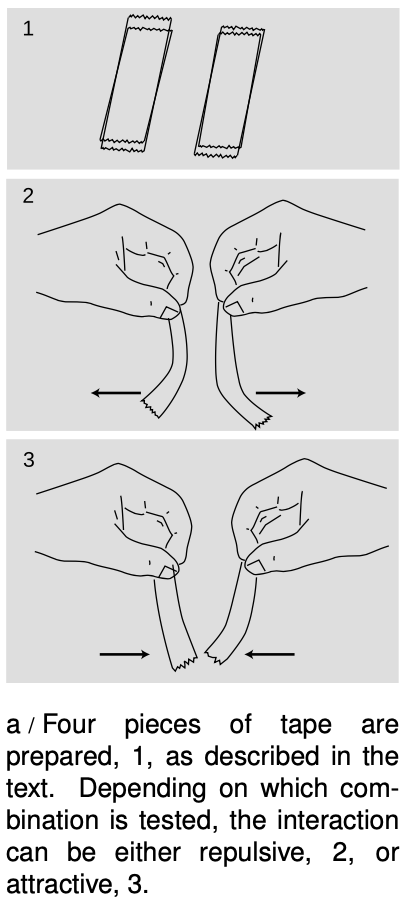21.1 The quest for the atomic force by Benjamin Crowell, Light and Matter licensed under the Creative Commons Attribution-ShareAlike license.
21.1 The quest for the atomic force
Newton was not the first of the age of reason. He was the last of the magicians. -- John Maynard Keynes
Nevertheless it will be instructive to pick up Newton's train of thought and see where it leads us with the benefit of modern hindsight. In uniting the human and cosmic scales of existence, he had reimagined both as stages on which the actors were objects (trees and houses, planets and stars) that interacted through attractions and repulsions. He was already convinced that the objects inhabiting the microworld were atoms, so it remained only to determine what kinds of forces they exerted on each other.
His next insight was no less brilliant for his inability to bring it to fruition. He realized that the many human-scale forces --- friction, sticky forces, the normal forces that keep objects from occupying the same space, and so on --- must all simply be expressions of a more fundamental force acting between atoms. Tape sticks to paper because the atoms in the tape attract the atoms in the paper. My house doesn't fall to the center of the earth because its atoms repel the atoms of the dirt under it.
Here he got stuck. It was tempting to think that the atomic force was a form of gravity, which he knew to be universal, fundamental, and mathematically simple. Gravity, however, is always attractive, so how could he use it to explain the existence of both attractive and repulsive atomic forces? The gravitational force between objects of ordinary size is also extremely small, which is why we never notice cars and houses attracting us gravitationally. It would be hard to understand how gravity could be responsible for anything as vigorous as the beating of a heart or the explosion of gunpowder. Newton went on to write a million words of alchemical notes filled with speculation about some other force, perhaps a “divine force” or “vegetative force” that would for example be carried by the sperm to the egg.
 Luckily, we now know enough to investigate a different suspect as a candidate for the atomic force: electricity. Electric forces are often observed between objects that have been prepared by rubbing (or other surface interactions), for instance when clothes rub against each other in the dryer. A useful example is shown in figure a/1: stick two pieces of tape on a tabletop, and then put two more pieces on top of them. Lift each pair from the table, and then separate them. The two top pieces will then repel each other, a/2, as will the two bottom pieces. A bottom piece will attract a top piece, however, a/3. Electrical forces like these are similar in certain ways to gravity, the other force that we already know to be fundamental:
Luckily, we now know enough to investigate a different suspect as a candidate for the atomic force: electricity. Electric forces are often observed between objects that have been prepared by rubbing (or other surface interactions), for instance when clothes rub against each other in the dryer. A useful example is shown in figure a/1: stick two pieces of tape on a tabletop, and then put two more pieces on top of them. Lift each pair from the table, and then separate them. The two top pieces will then repel each other, a/2, as will the two bottom pieces. A bottom piece will attract a top piece, however, a/3. Electrical forces like these are similar in certain ways to gravity, the other force that we already know to be fundamental:
- Electrical forces are universal. Although some substances, such as fur, rubber, and plastic, respond more strongly to electrical preparation than others, all matter participates in electrical forces to some degree. There is no such thing as a “nonelectric” substance. Matter is both inherently gravitational and inherently electrical.
- Experiments show that the electrical force, like the gravitational force, is an inverse square force. That is, the electrical force between two spheres is proportional to 1/r2, where r is the center-to-center distance between them.
Furthermore, electrical forces make more sense than gravity as candidates for the fundamental force between atoms, because we have observed that they can be either attractive or repulsive.
21.1 The quest for the atomic force by Benjamin Crowell, Light and Matter licensed under the Creative Commons Attribution-ShareAlike license.